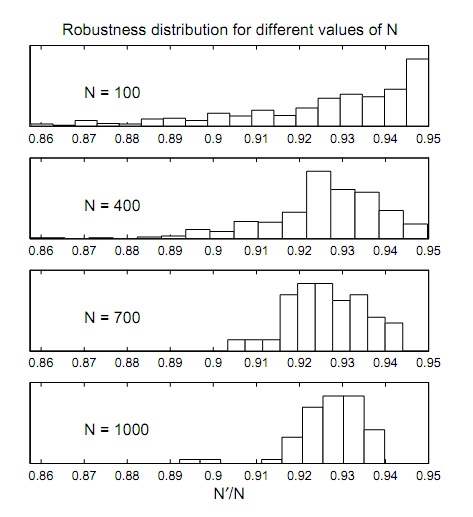We address the early design of complex, large-scale systems by viewing them as random networks and optimizing structure over their generative parameters. In this approach, we do not seek specific topologies, but rather classes of near-optimal networks which correspond to desirable statistical behavior, while also allowing flexibility to accommodate unmodeled constraints. Functionally, we perform the optimization of generative parameters on small networks (e.g., one hundred nodes) and use the results to design large networks (e.g., one thousand or more nodes). This approach is a computationally feasible forward design path for large-scale systems. A numerical example is given in which a network’s degree distribution is optimized for combined robustness and cost in a cascading failure scenario; the work has direct application to distributed communication systems. For more information:
|
 |
The networks shown here have the same number of connections, yet the optimized network is much more robust to failure than the random network. |
|||
Optimized and random networks |
|||||
|
|||||
